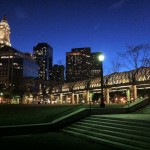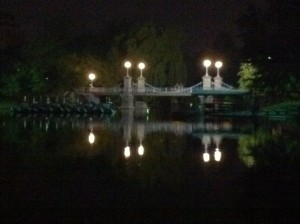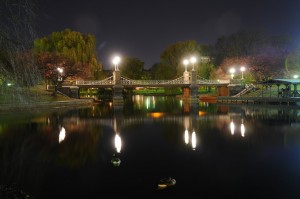iPhone4 vs. Nikon D300

Much has been written lately about the high quality of the latest iPhone’s camera, how megapixels aren’t the only metric, and how it outperforms other cell and consumer cameras.
The ability to easily take HDR and panorama shots, with zero postprocessing effort, and instantly share them, gives the iPhone4 some advantages over even the highest-end SLR’s.
Even the low-light performance has improved dramatically. With previous generation iPhones, I wouldn’t even bother to reach in my pocket unless there was an abundance of light.

It is about the software.
Despite the improvements, though, low-light continues to be one area where small, noise-sensitive sensors like the one in the iPhone have a very long way to go. They say “the best camera is the one you have with you”. If it is dark, and you aren’t far from home, then it might just be worth going to get the camera you don’t have with you.
Compare the following two photos taken on subsequent nights with the iPhone4 and Nikon D300.

It is impressive that the tiny phone sensor is able to resolve any image whatsoever. But, beyond the engineering marvel, the photo isn’t worth much.
The same scene was shot again, a few days later with the Nikon D300.